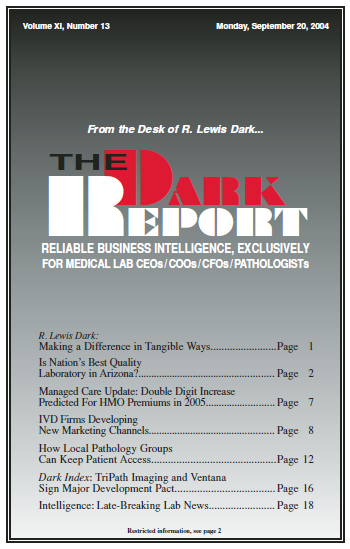CEO SUMMARY: Manufacturers across the IVD industry are aggressively seeking new marketing channels to reach their laboratory customers in more productive ways. That means moving outside the traditional emphasis on the exhibit halls of laboratory professional association meetings. In the case of Abbott Laboratories’ Architour, it is a huge semi-tractor trailer rig that brings its …
IVD Firms Developing New Marketing Channels Read More »
To access this post, you must purchase The Dark Report.


